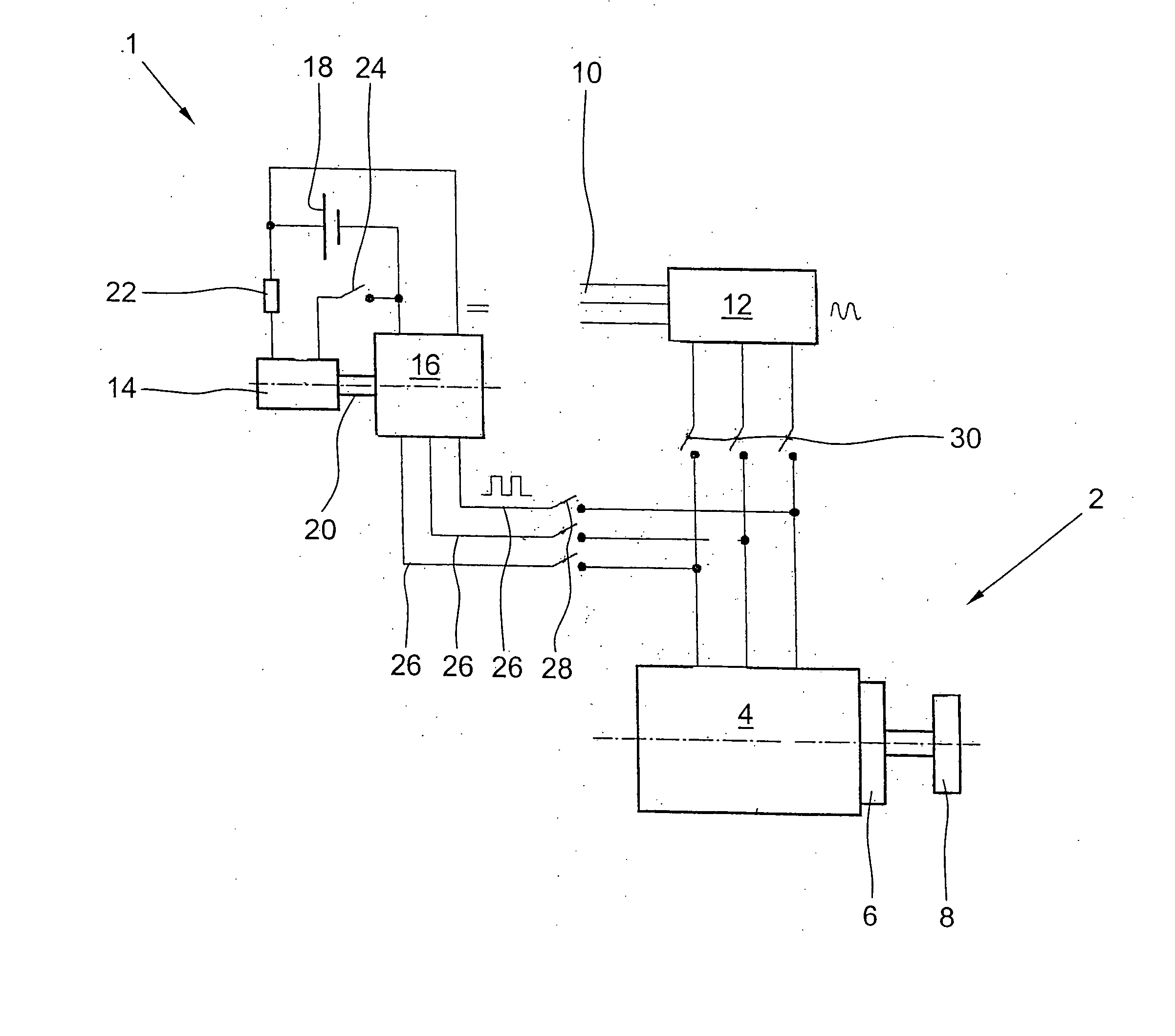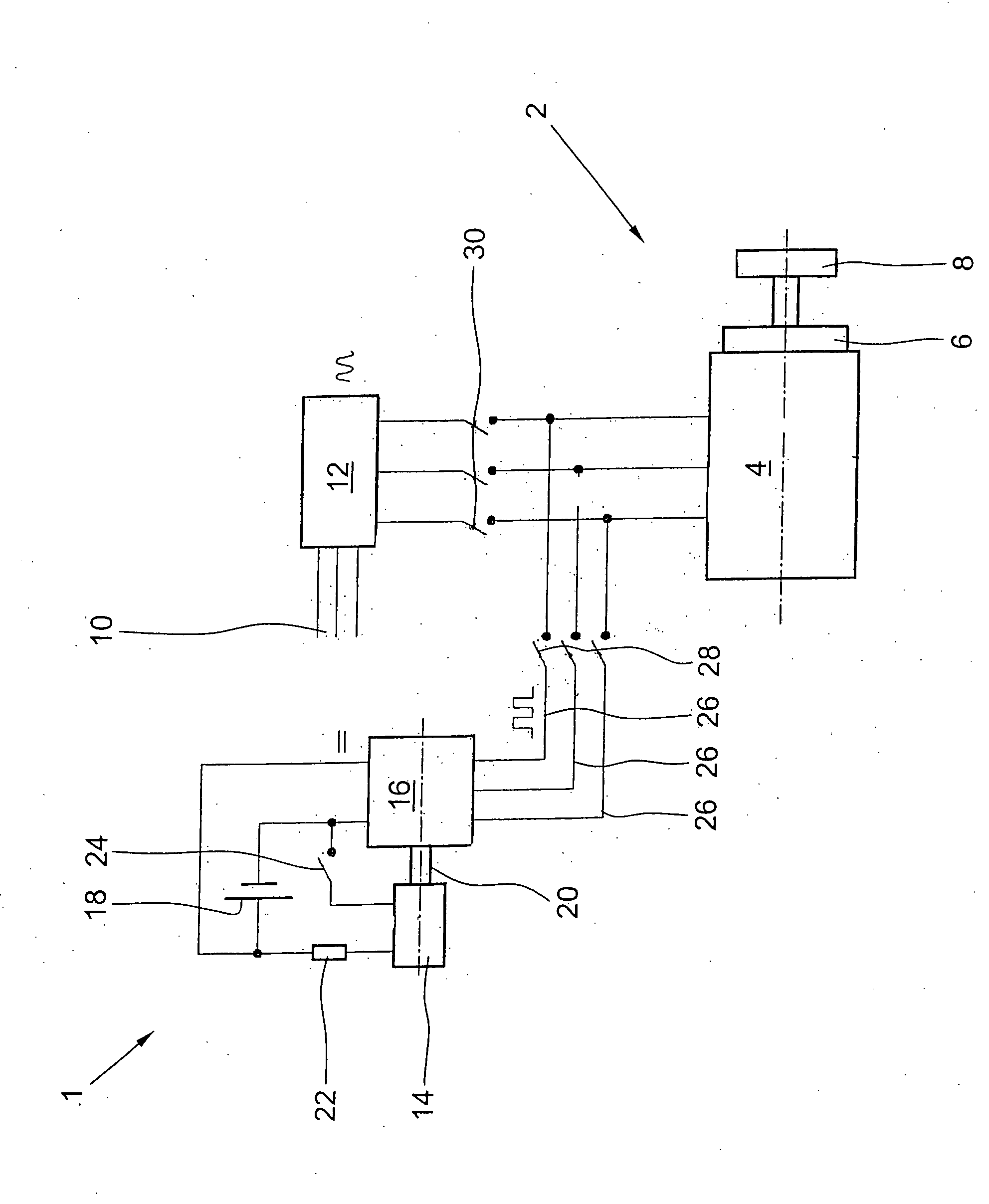Wind power plant
a wind power plant and wind turbine technology, applied in the direction of rotors, marine propulsion, vessel construction, etc., can solve the problems of insufficient speed limitation, easy destruction of electronic components, and insufficient torque limitation, and achieve accurate torque regulation and speed regulation
- Summary
- Abstract
- Description
- Claims
- Application Information
AI Technical Summary
Benefits of technology
Problems solved by technology
Method used
Image
Examples
Embodiment Construction
[0021] The FIGURE shows a schematic representation of a wind power plant 1 according to the exemplary embodiment and / or the exemplary method of the present invention, having a device 2 for adjusting the angle of pitch of the rotor blades (not shown) positioned rotatably on a hub. The angle of pitch of the rotor blades to the wind is able to be adjusted via blade adjustment mechanism 2, as a function of the wind force, in order to use the wind force in an optimum fashion, and to put the rotor blades into their safety position when the wind is too strong. In this way, overload damage in wind power plant 1, based on an inadmissibly high speed, is avoided. Blade adjustment mechanism 2 is made up essentially of an adjustment drive 4 which, in the exemplary embodiment shown, is executed as an asynchronous motor, and a gearing 6 preconnected to it. Thereby, even using relatively small, light asynchronous motors 4, the required high torques for the rotor adjustment can be mustered.
[0022] A...
PUM
 Login to View More
Login to View More Abstract
Description
Claims
Application Information
 Login to View More
Login to View More - R&D
- Intellectual Property
- Life Sciences
- Materials
- Tech Scout
- Unparalleled Data Quality
- Higher Quality Content
- 60% Fewer Hallucinations
Browse by: Latest US Patents, China's latest patents, Technical Efficacy Thesaurus, Application Domain, Technology Topic, Popular Technical Reports.
© 2025 PatSnap. All rights reserved.Legal|Privacy policy|Modern Slavery Act Transparency Statement|Sitemap|About US| Contact US: help@patsnap.com


